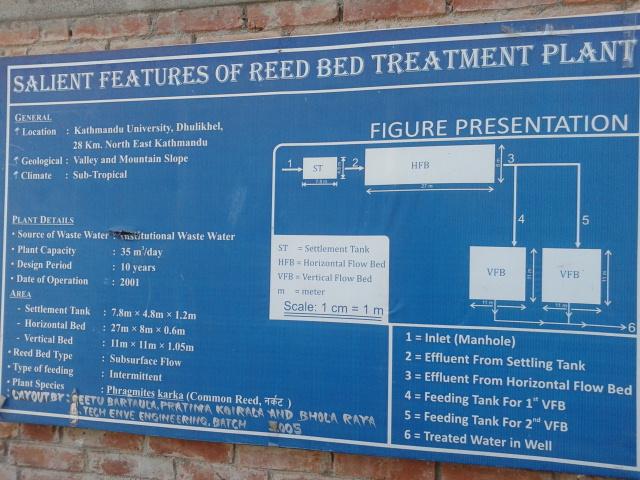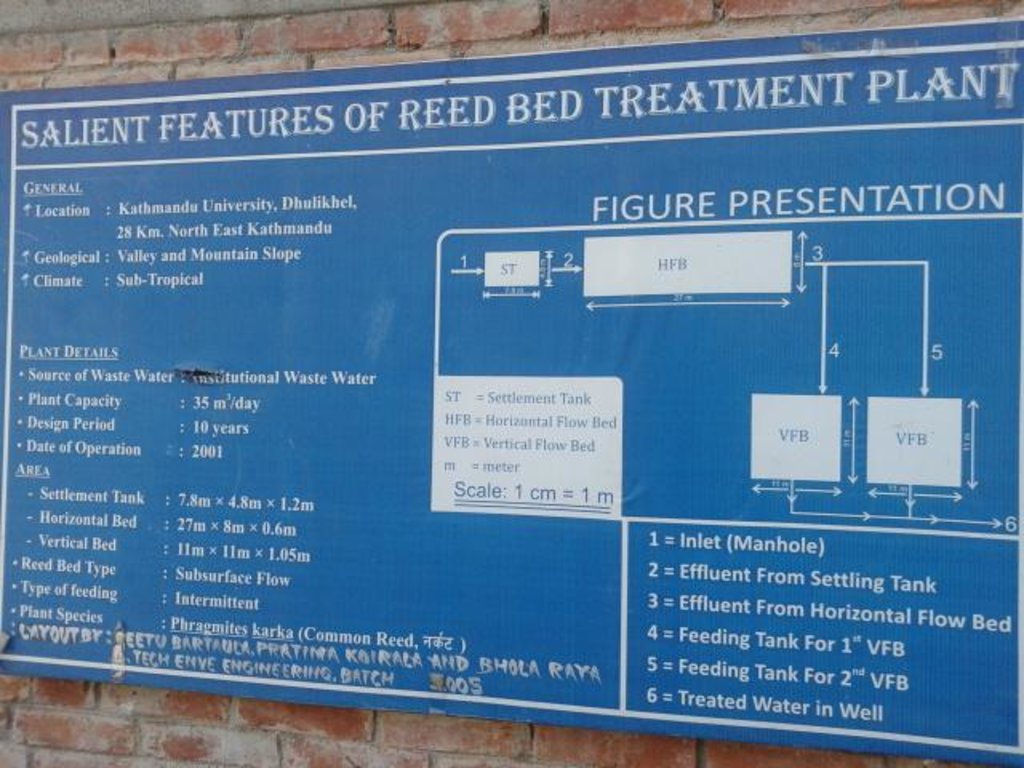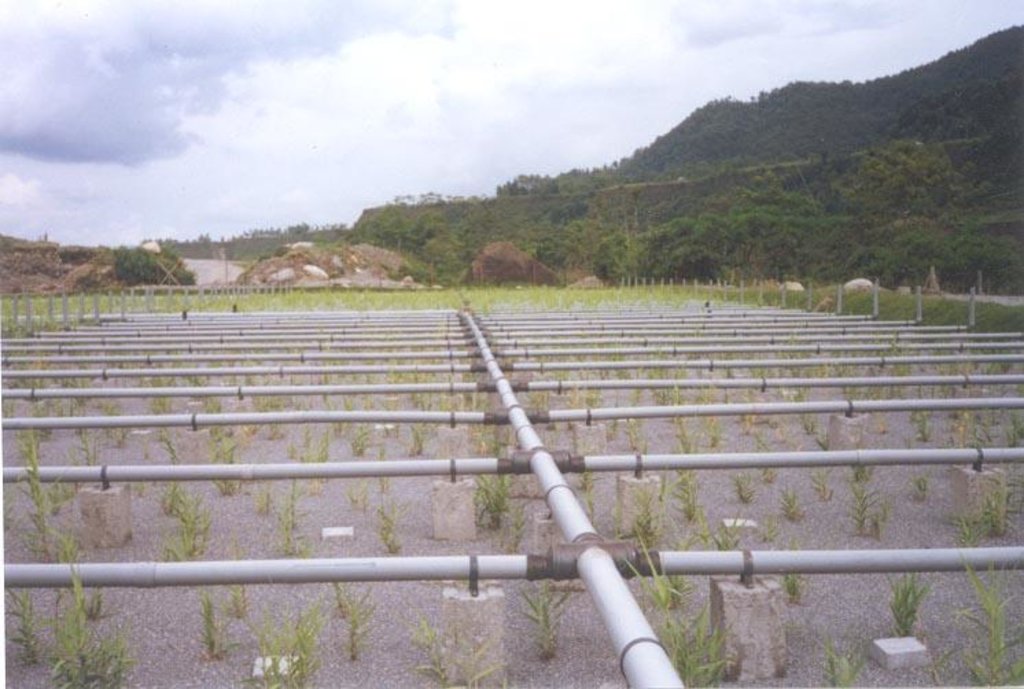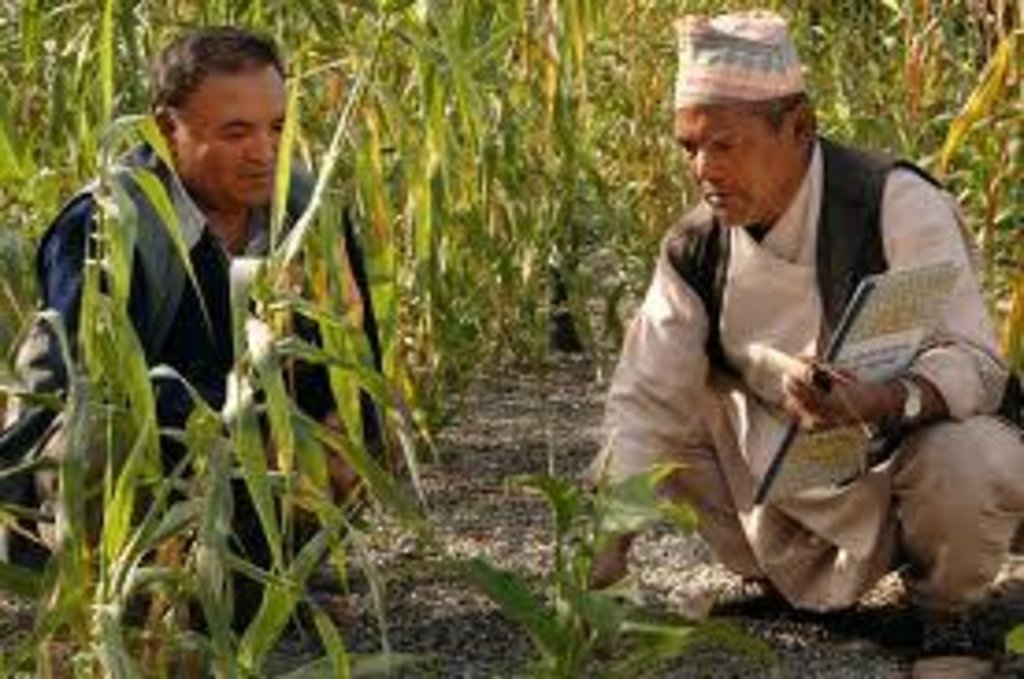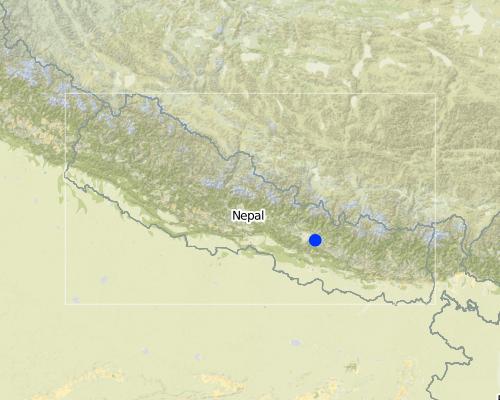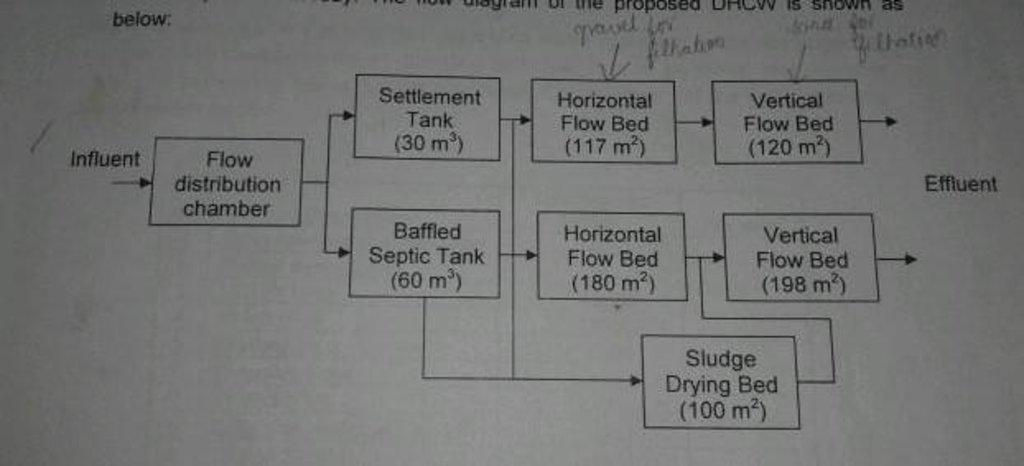Biological Waste Water Treatment Plant [Nepal]
- Creation:
- Update:
- Compiler: Sabita Aryal
- Editor: –
- Reviewer: David Streiff
Waste Water Treatment by the use of Reed Bed Technology
technologies_1179 - Nepal
View sections
Expand all Collapse all1. General information
1.2 Contact details of resource persons and institutions involved in the assessment and documentation of the Technology
SLM specialist:
Thapa Kripa
thapakripa95@gmail.com
Kathmandu University
Nepal
SLM specialist:
Mahat Sabnam
Kathmandu University
Nepal
SLM specialist:
Newa Manashree
Kathmandu University
Nepal
Name of the institution(s) which facilitated the documentation/ evaluation of the Technology (if relevant)
Kathmandu University (KU) - Nepal1.3 Conditions regarding the use of data documented through WOCAT
When were the data compiled (in the field)?
05/01/2015
The compiler and key resource person(s) accept the conditions regarding the use of data documented through WOCAT:
Yes
2. Description of the SLM Technology
2.1 Short description of the Technology
Definition of the Technology:
The technology adopted is a treatment plant that treats and purifies waste water being discharged from the hospital biologically.
2.2 Detailed description of the Technology
Description:
It is located in Dhulikhel Hospital premises, Kavre. This treatment plant purifies the waste water being discharged from the hospital biologically on a daily basis.
Biological action takes place in the horizontal and vertical reed bed with the help of bacteria present in the root nodules of Reed plant. The Reed plant helps in spreading the oxygen through its roots. Anaerobic decomposition takes place with the help of oxygen which is spread by the roots.
Purpose of the Technology: The main purpose of this plant is to make the water less toxic so that it does not pose any danger to the human health. It is a biological process in which the Reed plant treats the waste water coming from the hospital.
Establishment / maintenance activities and inputs: Dhulikhel Hospital Constructed Wetland (DHCW) was commissioned in July 1997. The design of DHCW was designed for an average waste water volume of 10m3/ day. But at present, the waste water production is in the range of 75m3/day. Recently, it has been expanded and designed to treat the waste water volume up to 90m3/day.
The plant is maintained by the specialists themselves and the investors are the hospital owners. The task of planning, design, drawing and estimates for the expansion was undertaken by ENPHO (Environment and Public Health Organization ) in association with WATSAN (Water and Sanitation) solution.
Natural / human environment: The treatment plant needs gravel for filtration in horizontal flow bed where the reed bed plant is planted. In addition, sand is required for filtration in vertical flow bed. A slight slope is maintained for the water to flow in one direction .
2.3 Photos of the Technology
2.5 Country/ region/ locations where the Technology has been applied and which are covered by this assessment
Country:
Nepal
Region/ State/ Province:
Dhulikhel
Further specification of location:
Kavre
Map
×2.6 Date of implementation
If precise year is not known, indicate approximate date:
- less than 10 years ago (recently)
2.7 Introduction of the Technology
Specify how the Technology was introduced:
- through projects/ external interventions
3. Classification of the SLM Technology
3.1 Main purpose(s) of the Technology
- improve water quality
3.2 Current land use type(s) where the Technology is applied

Waterways, waterbodies, wetlands
- Drainage lines, waterways
Comments:
Major land use problems (compiler’s opinion): Biological wastes from the hospital has a high chance in contaminating the area when disposed recklessly.
Major land use problems (land users’ perception): The water is safe to use for irrigation purpose.
Future (final) land use (after implementation of SLM Technology): Other: Ow: Waterways, drainage lines, ponds, dams
If land use has changed due to the implementation of the Technology, indicate land use before implementation of the Technology:
Cropland: Ca: Annual cropping
3.4 SLM group to which the Technology belongs
- wetland protection/ management
- waste management/ waste water management
3.5 Spread of the Technology
Specify the spread of the Technology:
- evenly spread over an area
If the Technology is evenly spread over an area, indicate approximate area covered:
- 100-1,000 km2
Comments:
Total area covered by the SLM Technology is 0.002036 m2.
The total area covered by the SLM technology at Dhulikhel Hospital was found to be 4 ropanies that is 2036m2=0.002036km2
3.6 SLM measures comprising the Technology

vegetative measures
- V5: Others

management measures
- M6: Waste management (recycling, re-use or reduce)
Comments:
Main measures: vegetative measures
Secondary measures: structural measures
Type of agronomic measures: better crop cover, contour planting / strip cropping
Type of vegetative measures: aligned: -linear
3.7 Main types of land degradation addressed by the Technology
4. Technical specifications, implementation activities, inputs, and costs
4.1 Technical drawing of the Technology
4.2 Technical specifications/ explanations of technical drawing
Layout of the Biological Waste Water Treatment Plant is given below:
Location: Dhulikhel. Kavre
Technical knowledge required for field staff / advisors: high (Engineers)
Main technical functions: improvement of water quality, buffering / filtering water
Secondary technical functions: increase / maintain water stored in soil, increase of groundwater level / recharge of groundwater, water harvesting / increase water supply, increase of biomass (quantity)
Contour planting / strip cropping
Material/ species: Norcot (Phragmites karka)
Aligned: -linear
Vegetative material: T : trees / shrubs
Number of plants per (ha): 6 p/m2
Vertical interval between rows / strips / blocks (m): 4 p/m2
Spacing between rows / strips / blocks (m): 0.15
Trees/ shrubs species: Reed bed
Wall/ barrier
Vertical interval between structures (m): S,C
Spacing between structures (m): 10 mm
Depth of ditches/pits/dams (m): 20-40 mm
Vegetation is used for stabilisation of structures.
Change of land use practices / intensity level: From random to controlled
4.3 General information regarding the calculation of inputs and costs
other/ national currency (specify):
Rupees
Indicate exchange rate from USD to local currency (if relevant): 1 USD =:
103.0
4.4 Establishment activities
| Activity | Type of measure | Timing | |
|---|---|---|---|
| 1. | Earthwork in excavation in foundation, drain, pipe trench and lead | Structural | Dry Day |
| 2. | Earth work in refilling including watering and ramming | Structural | Dry day |
| 3. | Dry flat brick soiling for 10 m2 | Structural | Dry Day |
| 4. | Edge brick soiling in 1.6 cm and pointing in 1.2 cm for 10 m2 | Structural | |
| 5. | Dry edge brick soiling in 1:6 cm for 10 sq m | Structural |
4.5 Costs and inputs needed for establishment
| Specify input | Unit | Quantity | Costs per Unit | Total costs per input | % of costs borne by land users | |
|---|---|---|---|---|---|---|
| Labour | Earthwork in excavation | unit | 1.0 | 122.21 | 122.21 | |
| Labour | Earth work in refilling including watering and ramming | unit | 1.0 | 87.29 | 87.29 | |
| Labour | Edge brick soiling (mason) | unit | 1.0 | 5293.83 | 5293.83 | |
| Construction material | Brick | unit | 1.0 | 253.92 | 253.92 | |
| Construction material | Sand | unit | 1.0 | 3412.38 | 3412.38 | |
| Construction material | Wood | unit | 1.0 | 1000.0 | 1000.0 | |
| Other | Mason | unit | 1.0 | 1470.0 | 1470.0 | |
| Total costs for establishment of the Technology | 11639.63 | |||||
4.8 Most important factors affecting the costs
Describe the most determinate factors affecting the costs:
The most determinate factor affecting the cost is the labour cost.
5. Natural and human environment
5.1 Climate
Agro-climatic zone
- humid
- sub-humid
Thermal climate class: tropics
Thermal climate class: subtropics
5.2 Topography
Slopes on average:
- flat (0-2%)
- gentle (3-5%)
- moderate (6-10%)
- rolling (11-15%)
- hilly (16-30%)
- steep (31-60%)
- very steep (>60%)
Landforms:
- plateau/plains
- ridges
- mountain slopes
- hill slopes
- footslopes
- valley floors
Altitudinal zone:
- 0-100 m a.s.l.
- 101-500 m a.s.l.
- 501-1,000 m a.s.l.
- 1,001-1,500 m a.s.l.
- 1,501-2,000 m a.s.l.
- 2,001-2,500 m a.s.l.
- 2,501-3,000 m a.s.l.
- 3,001-4,000 m a.s.l.
- > 4,000 m a.s.l.
Indicate if the Technology is specifically applied in:
- concave situations
5.3 Soils
Soil depth on average:
- very shallow (0-20 cm)
- shallow (21-50 cm)
- moderately deep (51-80 cm)
- deep (81-120 cm)
- very deep (> 120 cm)
Soil texture (topsoil):
- coarse/ light (sandy)
Topsoil organic matter:
- low (<1%)
If available, attach full soil description or specify the available information, e.g. soil type, soil PH/ acidity, Cation Exchange Capacity, nitrogen, salinity etc.
Soil texture (topsoil): Filtration is vertical reed bed
Soil fertility is medium
Topsoil organic matter is covered with gravel
Soil drainage / infiltration is good and filtration occurs through voids in sand and gravel
Soil water storage capacity is medium
5.4 Water availability and quality
Availability of surface water:
good
Water quality (untreated):
unusable
Comments and further specifications on water quality and quantity:
Availability of surface water is good during monsoon
Water quality (untreated) is unusable since it is biological and medical waste
5.5 Biodiversity
Species diversity:
- low
Comments and further specifications on biodiversity:
Only one species of plant is planted
5.6 Characteristics of land users applying the Technology
Relative level of wealth:
- average
Individuals or groups:
- employee (company, government)
Level of mechanization:
- manual work
- mechanized/ motorized
Gender:
- women
- men
Indicate other relevant characteristics of the land users:
Land users applying the Technology are mainly common / average land users
Difference in the involvement of women and men: The treatment plant provided treated water which is mainly used for irrigation purpose. There is an equal involvement of men and women in the field.
5.7 Average area of land owned or leased by land users applying the Technology
- < 0.5 ha
- 0.5-1 ha
- 1-2 ha
- 2-5 ha
- 5-15 ha
- 15-50 ha
- 50-100 ha
- 100-500 ha
- 500-1,000 ha
- 1,000-10,000 ha
- > 10,000 ha
Is this considered small-, medium- or large-scale (referring to local context)?
- small-scale
5.8 Land ownership, land use rights, and water use rights
Land ownership:
- company
Land use rights:
- communal (organized)
Water use rights:
- open access (unorganized)
Comments:
SLM technology is used by the hospital specialists. However, the water is openly accessible.
5.9 Access to services and infrastructure
health:
- poor
- moderate
- good
drinking water and sanitation:
- poor
- moderate
- good
Irrigation:
- poor
- moderate
- good
6. Impacts and concluding statements
6.1 On-site impacts the Technology has shown
Socio-economic impacts
Water availability and quality
drinking water availability
drinking water quality
water availability for livestock
water quality for livestock
irrigation water availability
irrigation water quality
Socio-cultural impacts
SLM/ land degradation knowledge
livelihoods and human well-being
Comments/ specify:
the technology has increased the knowledge about irrigation and sanitation. This has indeed helped in better livelihoods and health.
Ecological impacts
Water cycle/ runoff
water quality
groundwater table/ aquifer
Biodiversity: vegetation, animals
biomass/ above ground C
6.2 Off-site impacts the Technology has shown
water availability
reliable and stable stream flows in dry season
buffering/ filtering capacity
6.3 Exposure and sensitivity of the Technology to gradual climate change and climate-related extremes/ disasters (as perceived by land users)
Gradual climate change
Gradual climate change
| Season | Type of climatic change/ extreme | How does the Technology cope with it? | |
|---|---|---|---|
| annual temperature | increase | well |
Climate-related extremes (disasters)
Meteorological disasters
| How does the Technology cope with it? | |
|---|---|
| local rainstorm | well |
| local windstorm | not known |
Climatological disasters
| How does the Technology cope with it? | |
|---|---|
| drought | not known |
Hydrological disasters
| How does the Technology cope with it? | |
|---|---|
| general (river) flood | not known |
Other climate-related consequences
Other climate-related consequences
| How does the Technology cope with it? | |
|---|---|
| reduced growing period | well |
Comments:
In 2007, expansion of the plant was proposed to treat the waste water volume up to 90m3/day.
6.4 Cost-benefit analysis
How do the benefits compare with the establishment costs (from land users’ perspective)?
Long-term returns:
slightly positive
How do the benefits compare with the maintenance/ recurrent costs (from land users' perspective)?
Short-term returns:
positive
Long-term returns:
very positive
6.7 Strengths/ advantages/ opportunities of the Technology
| Strengths/ advantages/ opportunities in the land user’s view |
|---|
| This technology has provided positive results for irrigation purpose. |
| There has also been an increase in water availability. |
| Strengths/ advantages/ opportunities in the compiler’s or other key resource person’s view |
|---|
|
The purification of water from the hospital has been used for various purposes. How can they be sustained / enhanced? Frequent cleaning of the chambers should be carried out. |
|
This technology has been proved to be very cost effective. How can they be sustained / enhanced? Periodic checking of the tanks and plants for any fault should be done. |
| This plant has been easily managed by the staff of Dhulikhel Hospital. |
| This technology provides opportunity to create/restore valuable wetland habitat. |
6.8 Weaknesses/ disadvantages/ risks of the Technology and ways of overcoming them
| Weaknesses/ disadvantages/ risks in the compiler’s or other key resource person’s view | How can they be overcome? |
|---|---|
| The treatment plant may not be tested regularly. | Engineers and specialists should be concerned about the matter. |
| The water output may not be safe for drinking. | People should be made aware about boiling and filtering the water before drinking. |
Links and modules
Expand all Collapse allLinks
No links
Modules
No modules


